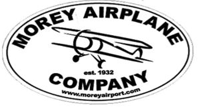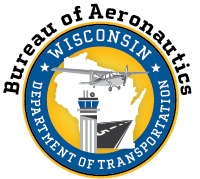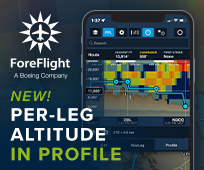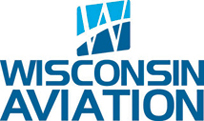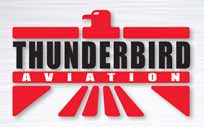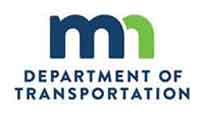by Kyle Sullivan
Airport Coordinator
MnDOT Office of Aeronautics
Published in Midwest Flyer Magazine – June/July 2021
Online Issue
For pilots – whether seasoned or novice – receiving an Instrument Flight Rules (IFR) clearance is not a new concept. The delivery never varies from the standard C.R.A.F.T. format we’ve all been taught to love since flight school. Yet, the method of receiving those clearances from Air Traffic Control (ATC) can wildly vary depending on your current location on deck within the airspace system. At a towered field, it’s relatively easy – contact the clearance delivery controller as listed in the publications, whether on ground control or a dedicated frequency. However, what do you do if you need to receive a clearance at an uncontrolled field?
Non-towered airports typically have a frequency listed within the Airport/Facility Directory (A/FD) – amongst other sources – to contact ATC for clearances while on deck. This frequency is usually for Approach or Center Control that governs the airspace above the field. Still, there are some remote airports where reaching ATC on deck can be difficult to downright impossible. So, then what? Or, if you are able to reach them, what happens if they are too busy to help?
I’m sure a fair number of us have all been in the same situation while trying to receive a clearance, finding ourselves unable to get a word in because ATC is clobbered by air carrier pilots talking overhead. Worse off, those of us on the ground waiting to contact ATC are very aware of the gas being unproductively burned, and the “hobbs” meter clicking away. Likewise, those who are airborne are often annoyed by the radios being bogarted for a significant amount of time by aircraft receiving these clearances. These delays are extremely hazardous to pilots in busy airspace since they draw the controllers’ attention away from their normal duties, as well as delay time-critical communications between airborne traffic.
The FAA is trying to tackle this issue with a 21st century solution. There are now phone numbers listed within the A/FD dedicated to delivering clearances to pilots over the phone. Air Route Traffic Control Center (ARTCC – a.k.a. “Center”) Clearance Delivery phone numbers, which have existed for about two years now, are the preferred means to contact ATC directly at outlying uncontrolled airports. The number immediately connects you to a dedicated “off-station” controller able to quickly deliver departure clearances. This service is intended to free up radio clutter and allow “on-station” controllers to focus solely on airborne aircraft within their airspace.
This concept of receiving a clearance via phone delivery is not new. However, previous processes have historically been cumbersome – with pilots having to call their local Flight Service Station or 1-800-Wx-Brief, then go through a maze of touch button menus to finally reach a representative. This process also requires the representative to reach out to the appropriate ATC outlet in order to receive the clearance, which also takes time. In a worst-case scenario, 1-800-Wx-Brief can often get inundated with call volumes, or the local FSS phoneline is busy for what seems like hours, which may significantly delay your departure beyond acceptable limits.
The dedicated clearance delivery phone number immediately connects you one-on-one with a controller who can deliver your clearance on the spot with no delay. The goal is for a pilot to call the clearance delivery number, receive their clearance, and depart within minutes of starting engines – all without wasting valuable engine-on time sitting on deck. Moreover, new Bluetooth technology built into many aircraft system panels and/or headsets allow phone calls to be made while in the aircraft. This technology makes the idea of calling for clearance by phone, while sitting at the hold short line, a very distinct and achievable possibility.
Additionally, the Clearance Delivery phone number can also be used to close IFR flight plans upon arrival if unable to reach a controller by radio once on the ground. However, the on-duty controller I spoke with wanted to relay to pilots that, while the phone number is intended to make receiving clearances easier, it CANNOT be used to file flight plans. Pilots must still file their flight plans via standards means, such as ForeFlight, FltPlan.com, 1-800-Wx-Brief, or your local FSS.
The process of receiving a clearance from the Clearance Delivery line is simple:
• Dial the local number within the A/FD.
• A live controller will pick up – no touch-button menus to navigate.
• Give your tail number associated with the filed flight plan and tell the controller you are ready to receive your departure clearance.
• The representative will contact the “on-station” controller via landline and relay the clearance back to you – typically less than a minute later.
• Depart no later than the clearance void time (i.e. the time given that you must be airborne by to guarantee ATC separation – which sounds like: “Clearance void if not airborne by xxxx”).
According to the FAA, the Clearance Delivery numbers are intended to supplement existing ground equipment – such as Ground Communications Outlets (GCO) and Remote Communications Outlets (RCO). Prior to widespread cell phone technology, these ground relay systems were established as a means to provide ground-to-ground communications between air traffic control specialists and pilots located at satellite airports. These outlets utilize VHF-to-telephone relays – through a series of “mic clicks” – to contact local ATC and Flight Service Stations to obtain clearances, weather briefings, and other pilot-related services prior to takeoff or after landing.
Though GCOs and RCOs are the preferred method of reaching ATC while at satellite and remote airports, these relays are aging and are often difficult to repair due to their remote nature. Additionally, GCOs/RCOs utilize older analog phone lines, which will be more difficult and costly to repair as the systems become increasingly outdated and cell phone technology quickly advances with upgrades to digital lines. These factors together are driving the FAA’s desire to find new options that will eventually replace the existing systems with more current and reliable technology. With that said, remote locations outside of cell phone service range will continue to have access to RCO capabilities until a more permanent option arises.
Minneapolis ARTCC Clearance Delivery can be reached at (651) 463-5588 and will also apply for much of the Midwest. Clearance Delivery numbers for specific airports can be found within the A/FD and vary by region.












